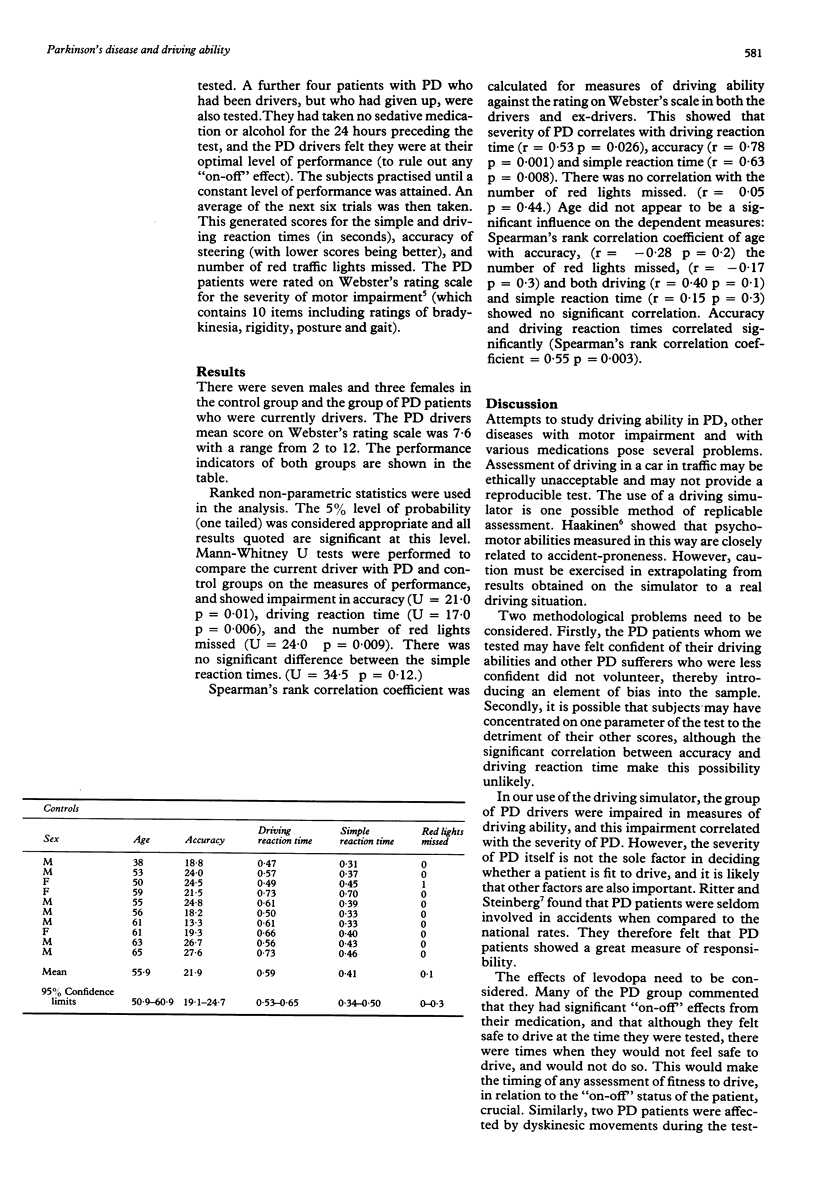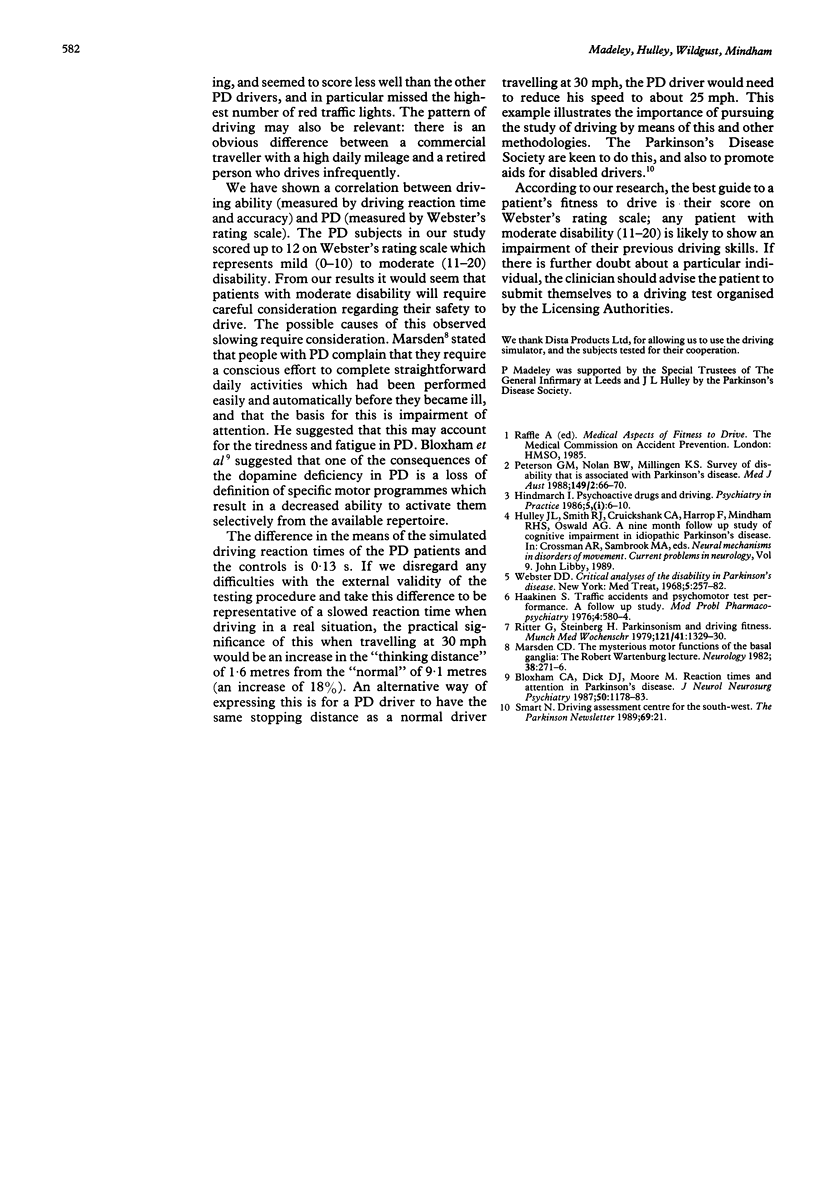Abstract
There is no guidance available for clinicians who have to decide on the fitness to drive of patients who have Parkinson's disease (PD). A computerised driving simulator was used to examine the effect of PD on driving ability. Ten drivers with idiopathic PD were tested as well as 10 age and sex-matched healthy drivers and four PD drivers who were no longer driving. Both the simulated driving reaction time and the accuracy of steering were significantly impaired in the PD group compared with the controls. Both of these measures correlated significantly with the severity of PD as measured on Webster's rating scale. Caution may be needed if the findings of simulated tests are to be extrapolated to real driving. However, our findings show that the severity of disability in PD as measured by Webster's rating scale may assist in assessing the fitness of a PD patient to drive.
Full text
PDF


Selected References
These references are in PubMed. This may not be the complete list of references from this article.
- Peterson G. M., Nolan B. W., Millingen K. S. Survey of disability that is associated with Parkinson's disease. Med J Aust. 1988 Jul 18;149(2):66, 69-70. doi: 10.5694/j.1326-5377.1988.tb120506.x. [DOI] [PubMed] [Google Scholar]
- Ritter G., Steinberg H. Parkinsonismus und Fahrtauglichkeit. MMW Munch Med Wochenschr. 1979 Oct 21;121(41):1329–1330. [PubMed] [Google Scholar]
- Webster D. D. Critical analysis of the disability in Parkinson's disease. Mod Treat. 1968 Mar;5(2):257–282. [PubMed] [Google Scholar]
- Willer J. C., Barranquero A., Kahn M. F., Sallière D. Pain in sciatica depresses lower limb nociceptive reflexes to sural nerve stimulation. J Neurol Neurosurg Psychiatry. 1987 Jan;50(1):1–5. doi: 10.1136/jnnp.50.1.1. [DOI] [PMC free article] [PubMed] [Google Scholar]


